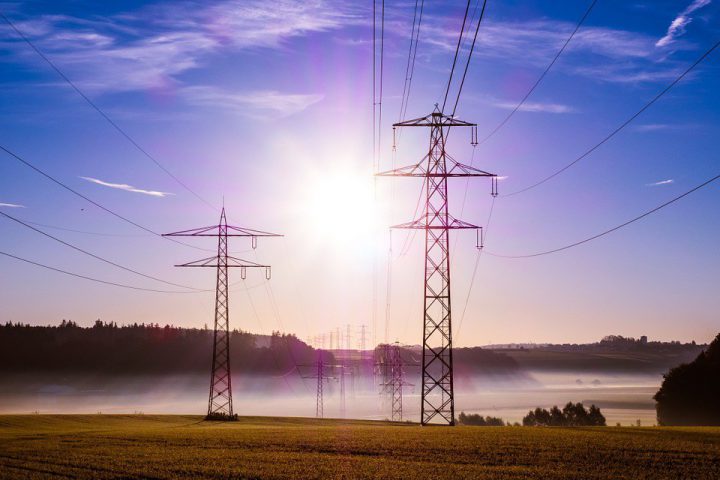Network rules: for people or profit?
Ofgem's consultation on network firms' price controls raises dividend question
By Matt Finch
Share
Last updated:
Proposed changes to technical rules by regulators don’t generally make headlines, so you could be forgiven for not hearing that energy regulator Ofgem has just published its RIIO2 consultation, on price controls for companies running the UK's gas and electricity transmission and distribution networks.

The RIIO2 consultation is not exciting (if you do fancy wading through all 153 pages of it, it’s available here). But it’s one of those dull things that matter. Because after all, every single bill-payer in the country will be affected by what comes out at the other end of this process; transmission and distribution charges are the second largest component of our energy bills, after wholesale costs.
The whole of this consultation is, arguably, a game. The game is simple. On the one side we have the network companies that want to make more money. They are private firms, and this is what they do. On the other side we have Ofgem, which is trying to ensure the companies make 'the right’ or 'a fair’ amount of returns.
In this game there are two distinct challenges: how can Ofgem ensure that
- the networks invest to ensure continued safe and reliable services and are ready for all the potential decarbonisation scenarios out there, whilst
- ensuring that this is done at, or close to, lowest cost?
It should be acknowledged that Ofgem believes that this game does not need to exist. Writing in the Financial Times, CEO Dermot Nolan states that “effective regulation should allow both (consumers and network companies) to benefit from the delivery of high quality services at the lowest cost”. But the problem, obviously, is defining what a ‘fair’ amount of return actually is.
'Fair' returns
When money is invested somewhere it gets a reward for being there, in the form of a dividend.
Just as mortgage providers receive a return on the the finance they lend (in the form of interest), the dividend payout is the reward to the owners of the capital. Dividends matter. If dividends are too low, there is a risk that the investment will go elsewhere. If dividends are too high, then customers feel cheated. After all, it is the customers that ultimately pay all of the ‘costs’ associated with a business, and dividends are one of those costs.
Ofgem does not, and cannot, regulate dividends. Instead, it sets price controls, which limit the amount of revenue that the DNOs can collect from their customers via bills.
Ofgem makes assumptions about what the revenue will be spent on. Unfortunately, it then buries these assumptions deep in its website. Luckily I’ve dug them out for you, and have analysed the amount that Ofgem nominally allocated for dividends, and compared them to the actual amounts paid.
I’ve done this for the current price control period for the six regional electricity DNOs (which have been the subject of two previous ECIU reports: RIIO Carnival and Monopoly Money). The current price control is still young, though, so there is only two years worth of data to compare.
Ofem 2016 Predicted (£m) | Actual 2016 DNO Payout (£m) | Ofgem 2017 Predicted (£m) | Actual 2017 DNO Payout (£m) | Combined Difference (£m) | Percentage of actual payout v nominally allocated payout | |
Electricity North West | 32 | 30 | 33 | 81 | +46 | 185% |
Northern PowerGrid | 56 | 100 | 58 | 0 | -14 | 95% |
Western Power | 169 | 0 | 179 | 314 | -35 | 97% |
UKPN | 109 | 146 | 114 | 217 | +140 | 177% |
Scottish Power | 65 | 110 | 69 | 95 | +72 | 167% |
SSE | 62 | 250 | 65 | 150 | +273 | 342% |
(All £ figures rounded to the nearest million. Full spreadsheet available here)
You can immediately see that only Northern Powergrid and Western Power paid out roughly what they were expected to, respectively 95% and 97% of their nominal amounts. The rest have paid out comfortably more. SSE’s figures stand out in particular; at 342%, its shareholders will especially think that is outstanding. Its customers on the other hand may feel differently, as they have funded this wealth exodus. (In a normal market, a frustrated customer could just choose another supplier. If you don’t like Asda, go to Morrisons. In the energy networks world, you’re stuck with your electricity DNO, as regional monopolies, based on where you live.)
Regardless of individual company figures, it’s hard to argue that the DNOs, collectively, are not gaming the system. Cumulatively they have paid out close to half a billion pounds in dividends over and above the level that Ofgem nominally allocated for them, in just two years. By definition, any money paid in dividends has not been invested into network infrastructure. What is the opportunity cost of half a billion quid?
Working for customers?
But, as initially mentioned, Ofgem is currently consulting for the next price control period (RIIO2), not the current RIIO1. This means it has the chance to right some perceived wrongs. And, on first glance, it looks like Ofgem has come out fighting - in particular, on the side of the customer.

Brand new proposals include the creation of independent customer engagement groups and implementing ‘failsafe measures’ to protect customers. But the thing that matters most is that Ofgem is proposing a reduction in the cost of equity, which is to say that it will presume that dividends should be less than they have accounted for in the RIIO1 period.
The long and short of it is that this is just a consultation though. It’s a very important consultation, as - and this needs stressing - it affects every single energy bill payer in the country, but nonetheless right now it’s still just a consultation. The proposals can, and will, be changed.
Last year, Citizens Advice calculated that over the RIIO1 period, network companies would trouser about £1bn per year more than they should. In The Times today, CEO Gillian Guy argues that provided Ofgem can hold its nerve, its current proposals form the basis of a much better price control period for us customers, and may be the solution to (perceived) excess dividends in the electricity distribution sector. Let’s hope, she says, that Ofgem has nerves of steel. For customers at home and in business alike, she is surely right.
Will the new rules help to save consumers money? Image: Ian Britton, creative commons licence
Share